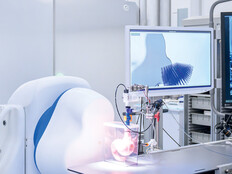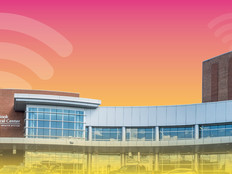State-of-the-Art Overhaul
When the expanding Parkview Health system decided it was time to build a brand-new flagship facility, there was no question that the Fort Wayne, Ind.-based hospital — Parkview Regional Medical Center — would incorporate the latest and smartest technology to support quality patient care. That meant integrating robust infrastructure, a high-speed, high-capacity network, and thousands of mobile and stationary devices to provide real-time point-of-care access to critical patient data, including medical records, diagnostic imaging, test results and telemetry.
On the network side, Thomas McRae, senior network engineer at Parkview, recognized that the new hospital needed network speed substantially faster than the 1-gigabit-per-second backbone in the system’s existing facilities. “Because we had a greenfield deployment, we wanted a state-of-the-art network that was high throughput, high capacity,” he said. He also wanted a foundation that could seamlessly support the imminent enterprise-wide rollout of the Epic electronic medical record (EMR) system.
On the hardware front, Field Service Team Lead Billy Cobb, IS Field Support Manager Jenny Gunkel and IS Project Leader 3 Christine Ables needed to identify and implement the technologies that best aligned with Parkview’s forward-thinking goals, including optimizing its heavily virtualized environment. They realized from the get-go that they needed to call in reinforcements.
“We knew we didn’t have all the resources we needed to be able to get the work done in a timely manner,” Gunkel said.
Collaborative Planning
Given the massive scale of the deployment — the new building had nearly one million square feet, seven floors and 15 different areas — meticulous planning was critical. McRae worked with CDW Healthcare to create a network that met Parkview’s rigorous speed, security and stability standards. The end result was a 10-gigabit backbone using Cisco 3750 switches for the edge and Nexus 7000 switches for the core, with gigabit connectivity to the desktops.
“We have fiber connectivity to 42 closets throughout the facility, each one with two switch stacks in it — one for regular traffic and one for critical care, high-priority patient traffic,” McRae said. “We leveraged CDW Healthcare for a substantial amount of design, including the virtual local area network assignment and determining the size of the switch stacks.”
Meanwhile, Cobb, Gunkel and Ables conducted in-depth user discussions with staff in each department moving into the new building to determine which technology would best support their workflow requirements. Based on this research, they created a number of standard clinical workstation configurations to help streamline implementation, although not all the hundreds of different required configurations fit neatly into these standards. The hardware components included desktops, notebooks, thin clients, tablets, barcode scanners, printers and mounts.
The Parkview team also paid close attention to ensuring the new hardware fit the software requirements for the facility-wide implementation of the new Epic EMR system, which would occur within months of completing the initial technology deployment
Tangible Benefits
The intensive planning and teamwork yielded substantial dividends. Not only did Parkview complete the implementation within the allotted 15-month time frame, the go-live went so smoothly they were able to close down a 24/7 support center after only two weeks, rather than keeping it open for the originally intended four weeks.
Parkview was also able to cut in half its planned support time following the Epic implementation. “I think the lessons we learned during the medical center go-live benefited us quite a bit for the Epic go-live,” Ables said.
Perhaps most satisfying has been the positive feedback from clinicians in the year following the opening of the Parkview Regional Medical Center, particularly from the imaging teams.
“They’ve all said it’s been phenomenal — their studies come down very rapidly,” McRae said, noting that Philips, Parkview’s telemetry provider, has also praised the network and its stability. “They generally don’t like to run on a customer-supported network, and they’ve been incredibly impressed with ours.”
Parkview continues targeting opportunities to further improve its technology to better support patient care. For example, they recently added technology that integrates with single sign-on authentication that enables clinicians to access patient data even more quickly and easily.
“We’re constantly improving the technology we’re using and the way we deliver services to our customers — our caregivers,” Cobb said. “If something new comes down the pike that’s going to allow us to work more efficiently or allow caregivers to work more efficiently, we’re going to implement it.”
Dive Deeper
Wondering how mobile tools and IT infrastructure can improve healthcare in-home health efforts? Check out the case study “Bringing State-of-the-Art Care to Life” to learn more about
- Hardware and fiber optic cable deployment
- Network reliability for high-priority traffic
- Point-of-care access to critical data for patient care








